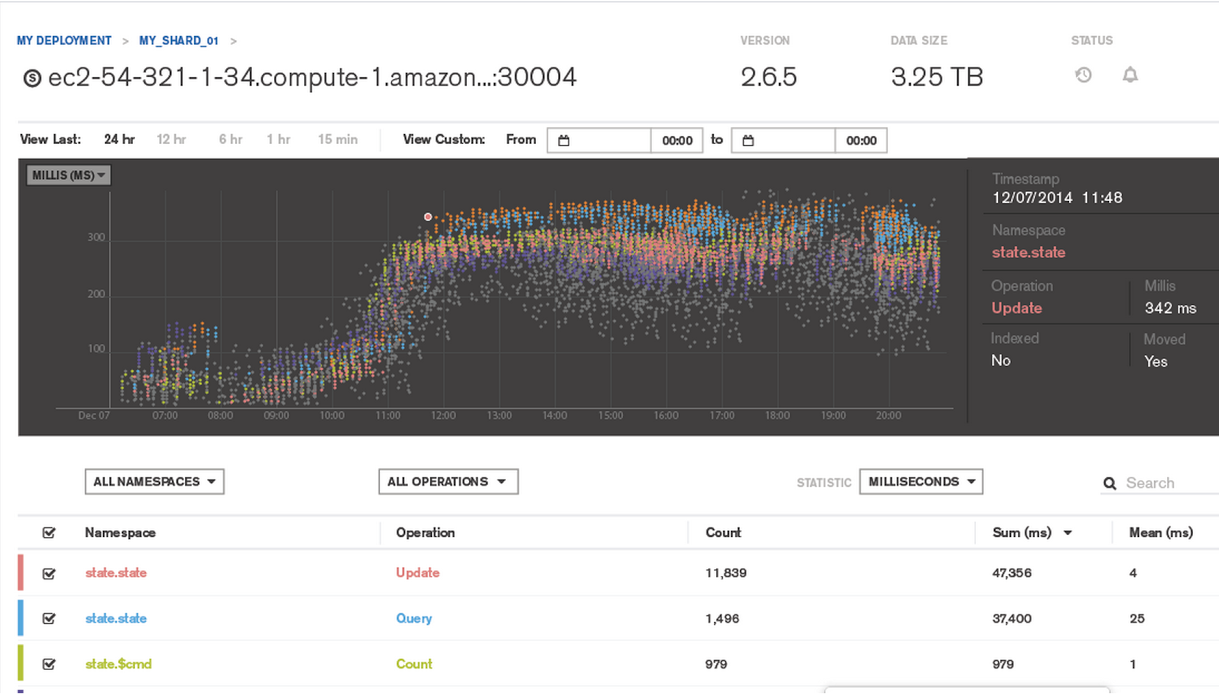| MongoDB 3.2 Released |
| Written by Kay Ewbank | |||
| Tuesday, 01 December 2015 | |||
|
MongoDB 3.2 has been released with support for document validation, partial indexes, and new storage engines.
The new storage engines offer encrypted and in-memory storage to make MongoDB useful in more situations. The existing WiredTiger and MMAPv1 engines are still supported, with the WiredTiger engine taking over as the default storage engine because of its better performance. MongoDB developers say the engine is between seven and ten times faster and reduces storage by 75% because of its data compression. Among the other engines, the encrypted storage engine provides end-to-end encryption of data, along with access controls and auditing. The in-memory storage engine promises: "highly predictable throughput and low latency for essential applications such as fraud detection, ad tech and user profile management" according to the announcement of the new release on the MongoDB website. Partial indexes are another addition to MongoDB 3.2. They allow you to create an index on a collection that is limited to the documents that conform to a filter expression. This means the index can be much smaller, taking less storage and being faster to update. Partial indexes can also speed queries because you can match against the filter criteria and use the index.
Document validation has also been added. This lets you add a constraint to a document collection using a validation document. If someone tries to add a document to the collection that doesn't conform to the constraint, they won't be allowed to add it. New tools include the MongoDB Connector for BI, which is designed to let end users explore data in MongoDB from with SQL-based BI and analytics platforms such as Tableau and Qlikview. Another new tool is MongoDB Compass, a graphical data explorer designed for end users to explore their databases, visually construct queries, and inspect records. Writing about the new release on the MongoDB blog, Eliot Horowitz, co-founder and CTO of MongoDB, said: "We continued to push the boundaries of the document database model with features like document validation and partial indexes. We introduced huge new components, like the in-memory and encrypted storage engines, and the BI connector. We made infrastructure improvements, such as config servers as replica sets; under-the-hood improvements, such as replacing the JavaScript engine (more on that in another post); and we continued to refine our tools, giving mongodump and mongorestore the ability to compress, pipe, and stream data over a network."
More InformationRelated ArticlesMongoDB in Action (book review)
To be informed about new articles on I Programmer, sign up for our weekly newsletter,subscribe to the RSS feed and follow us on, Twitter, Facebook, Google+ or Linkedin.
Comments
or email your comment to: comments@i-programmer.info |
|||
| Last Updated ( Tuesday, 01 December 2015 ) |




